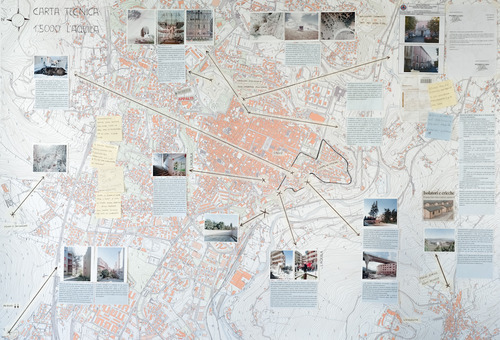
“Mr Mayor and members of the council. In a moment when we are assailed by the anxious doubt of fear, the heart of our city was stirred by the quest for a haven that would defend it more surely from the terrible consequences of the earthquake, and in the mind of each the strangest and most illogical ideas alternated, of abandoning our land forever to create wooden houses, which only an excessive panic could justify (…). Our town, after the terrible earthquake of 1703, which hit it so hard, rose again thanks to the valour and tenacity of its people (…). Not wooden shacks or modest dwellings were to oppose the earthquakes that continued to attack, but sumptuous palaces and monuments, well-built homes, drawing teachings from past cataclysms, turning buildings to such a position that the impact of the seismic wave investment would cause the least damage (…). To think of decentralization is an offence to every principle of logic and progress.”
Earthquake Commission Report and Recommendations.
L’Aquila, November 1915
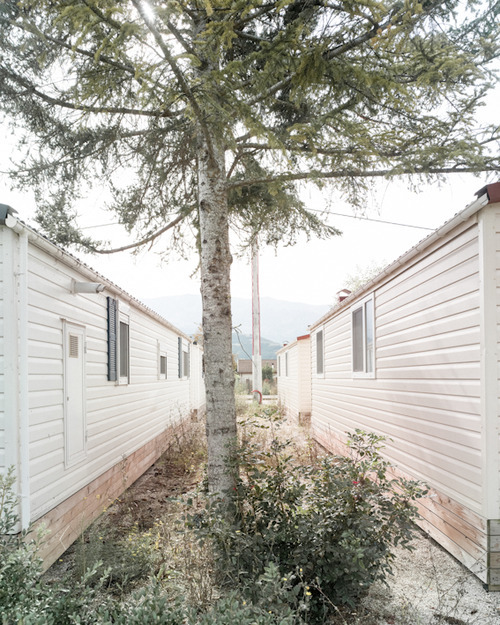
“Ideologies create substantiating archives of images, which encapsulate common ideas of significance and trigger predictable thoughts, feelings … The problem is not that people remember through photographs, but that they remember only the photographs. This remembering through photographs eclipses other forms of understanding, and remembering.”
Susan Sontag, Regarding the Pain of Others.
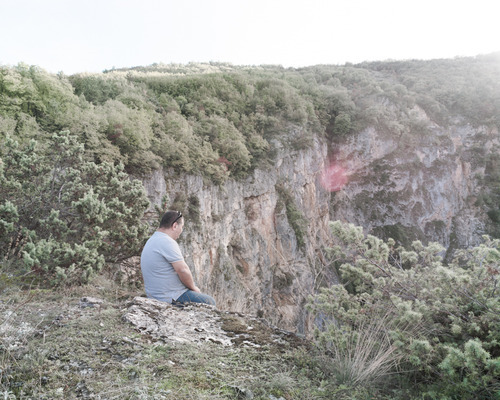
Studies, videos, films, documents, books, themed blogs really are an ocean in which we can easily lose ourselves and this is why it is difficult to understand which information and how much of it has reached its destination correctly. What is defined as “collective memory” is not at all the result of a memory but rather a pact, agreeing which version of the facts should be deemed valid.
The earthquake of 6 April 2009 was preceded by a series of facts and circumstances even quite different from one another. “Anagrafe del danno” moves transversally across facts, places and figures that somehow characterized the event.
My approach is based chiefly on the study of the harbingers of the earthquake, beginning metaphorically with the mammoth (Elephas Meridionalis), the photo that opened the project, showing an animal that lived over one million years ago, in the Aquila basin, which looked like a large closed lake. This large prehistoric animal, closed in its “armour” along with the scaffolding costing 240,000,000 euros, which envelops the entire historic centre of L’Aquila, and in excess of 1,200 decrees, ordinances and regulations produced by the State, by local authorities and the civil protection agency, are a clear sign of how things stand five years after earthquake. [Sergio Camplone]
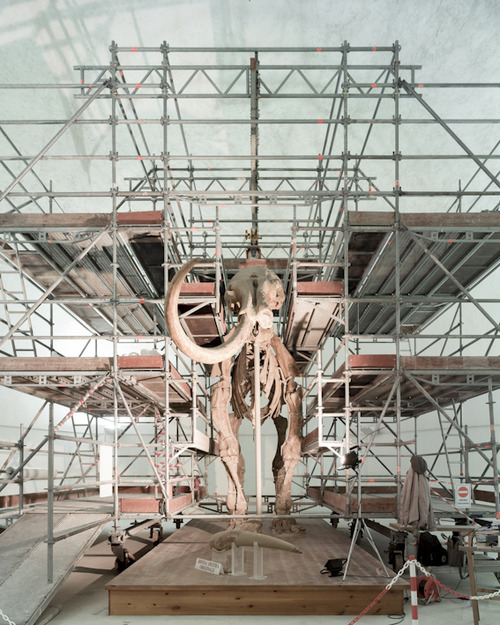
Above image caption: Mammuthus meridionalis: extinct species widespread in the Italian peninsula at the beginning of the Quaternary. The animal, which dates back about a million years ago, lived in Aquila basin, which at the time appeared as a large lake closed. Before the affirmation of the concept of evolution of modern geology, the people who lived in the areas affected by the discovery of fossils of ‘meridionalis’, tended to give fanciful explanations about their origin, as confirmed by John Murray in his ‘Guide for Central Italy in 1843’. «The inhabitants, who are ignorant of the natural history, argue that this way is passed Hannibal and therefore believe that the bones are the remains of the Carthaginian elephants.»
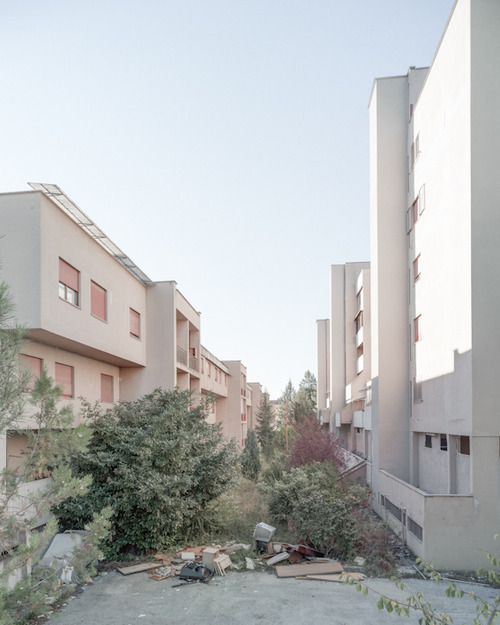
Above image caption: Pettino, the new city born from the general plan of ‘75. One of the largest districts of L’Aquila, is situated on a fault line, 10 km deep, which has generated the most devastating earthquakes in the region. The geological report attached to the plan showed clearly the fault, says Anthony Perrotti the former general manager of the ‘Department of Environment and Territory of the region, but obviously the city had to expand there. (…) “Luckily, the fault that was set in motion in 2009, was not to Pettino, otherwise we would have seen far more destruction.”
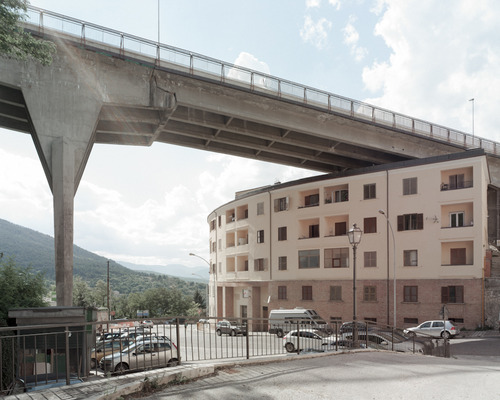
Above image caption: The area “Campo di fossa” for centuries it was never built. A district populated by ghosts, a place used for the executions of death sentences, then an esplanade used to the barracks of the earthquake of 1461, 1703 and the one of Marsica in 1915. To put it short, a damn neighborhood. “Campo di fossa” is the name of the whole area at the southern end of the fortified perimeter of the city of Aquila, which was established on the basis of a single draft urbanization, made in the mid-thirteenth century. The curse will die out only when all the churches, all the monasteries and convents all of the “Campo di Fossa” will disappear due to earthquakes or as a result of restructuring and changes that will make them unrecognizable.
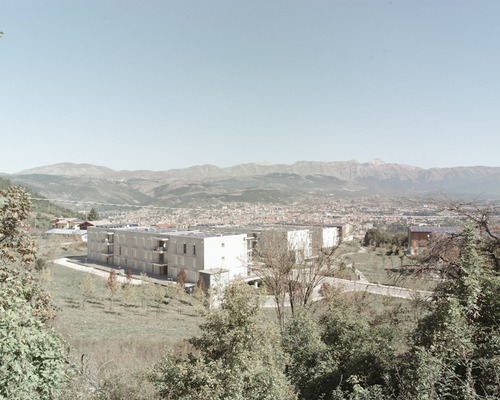
Above image caption: The Decree Law 28 April 2009, n. 39, and more specifically Article 12 of the Decree, states that the Autonomous Administration of State Monopolies of the Ministry of Economy and Finance will devote a percentage of the profits from gambling games, including the ‘Gratta e Vinci’, 10eLotto, WinForLife, Poker Cash, Casino online, etc. … to the reconstruction of the city of L’Aquila and the towns of the crater to the extent of not less than EUR 500 million per year from 2009 until 2032. According to information provided by the concessionaire “Sisal”, between September 2009 and December 2012 only the WinForLife would have earned € 305 million for the reconstruction of Abruzzo, but the funds, as denounced by the local authorities concerned and the many committees and associations of citizens, there is no trace. As for the figures earned through to VLTs, the Court of Auditors, in its Report on the General Account of the State for the financial year 2012, stated that “the State has gained from the video lottery industry at least 3 billion EUR.

Above image caption: The order of the President of the Council of Ministers no. 3797 of 2009, Article 5, allowed to repay the cost of removal of furniture (and any deposit) to those who had to vacate the houses damaged by the earthquake.
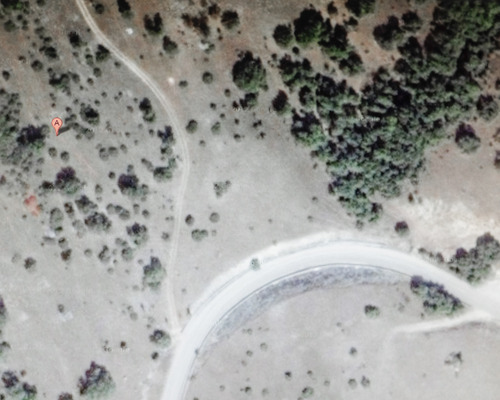
Above image caption:: The epicenter of the earthquake L'Aquila - INGV data INGV 42 334 13,334 USGS Data: 06/04/2009 at 01:32:39 (03:32:39) N ° 42 334, 13 334 ° E
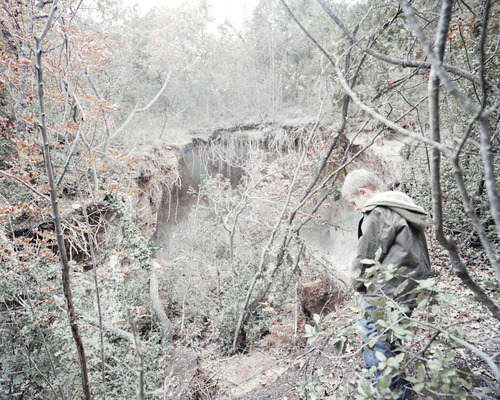
© All images Sergio Camplone from the series 'The Register of a Damage' (Anagrafe del danno, L'Aquila, 2014)
---
LINKS
Sergio Camplone
Italy
share this page
